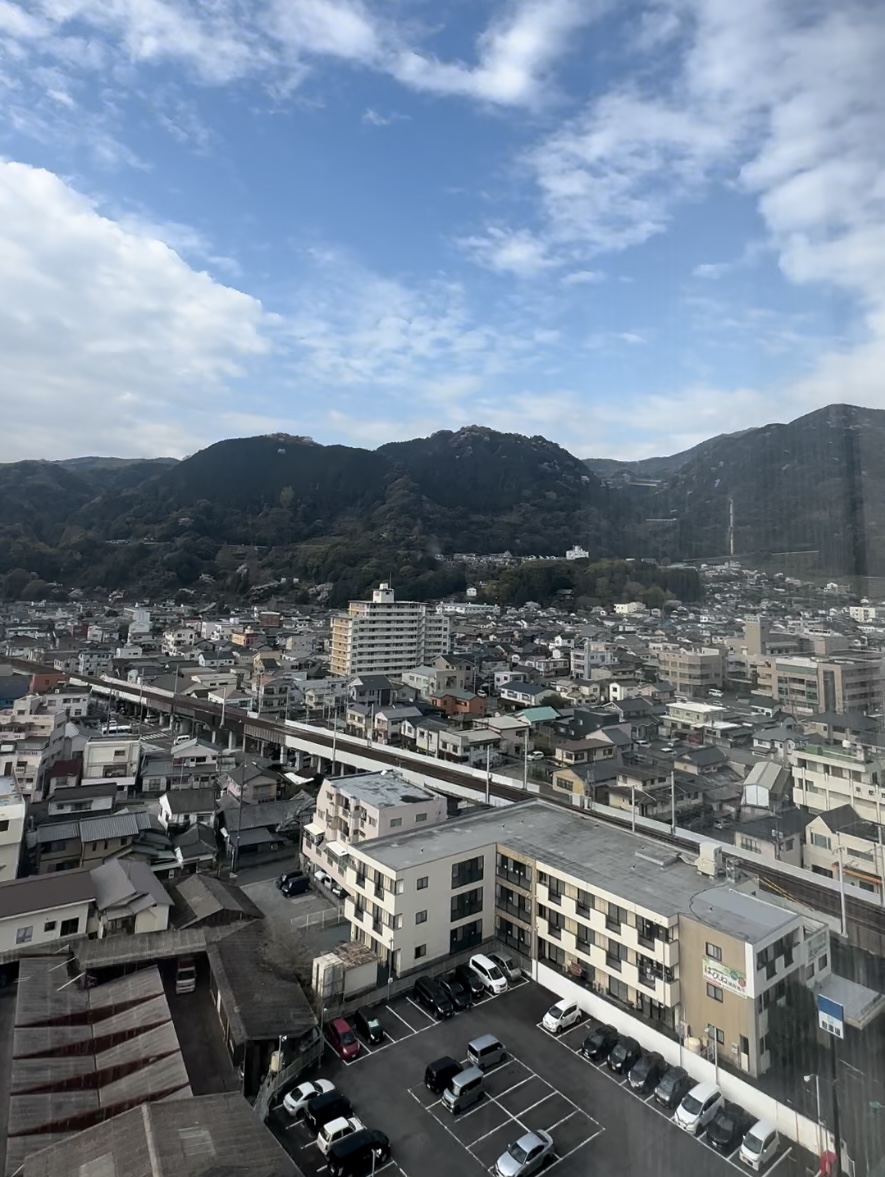When my dad was building the itinerary for our trip to Japan, Kyushu was high on his list. I’d been to Kyushu 20 years ago and we made it as far as Fukuoka. We were meant to explore the south and west of the island, but a typhoon came in and cut that trip short. I know this has stayed in my dad’s mind as a “miss” for me, so it was a top priority destination for this trip.
My dad laid out Nagasaki and Beppu as 2 possibilities for this trip. Beppu is known as a hot spring destination which to me means leisure time spent relaxing in onsens. Nagasaki is mostly known for the unfortunate event that occurred in WWII and a food culture that fuses Japanese with Western & Chinese. Given the choice of spending quiet time bathing in an onsen 3-4 times a day or traipsing around Nagasaki doing touristy things, I chose the opportunity to do some forced relaxing.
As I started researching Beppu and the surrounding area, I discovered that the home of chicken karaage was in Nakatsu, a town on the way to Beppu. My mom’s chicken karaage is one of my favourite foods in the world, so when I heard that the best of the best was concentrated in this area, I wanted to stop to see how it measured up.
After 2 nights in Fukuoka, we boarded the train to head east towards Beppu. Our lunch stop was Nakatsu and we had an hour and a half until the next train came through to take us to Beppu. I researched Japan’s chicken karaage association website to build an itinerary of places which were walkable from the station. By my accounts, I thought we could stop at 3 to get a good sampling of the karaage in the area. We took at taxi to our first stop and I determined we could make our way back to the train station from there. When we explained to our taxi driver (and at all the stops) we were from Canada and doing this karrage crawl, and no one could believe that “foreigners” made a stop in their tiny town to taste their specialty. It kind of reminded me of the udon pilgrimage my brother and I did 5 years ago. It also reminded me of why I love travelling off the beaten track in Japan.
We were hungry when we got to our first stop, Chicken House, and overdid it on our ordering (I’m also not sure my dad understood the meaning of the crawl) and we quickly determined at the next stops, we’d only order wings because they are the most delicious and it’s what my mom uses to make her karaage.

All of the karaage at Chicken House had a coating that made their chicken extra crunchy. I compare it to a tempura battered crunch, or the closest to North American fried chicken which was good, but not traditional enough. Yukichi Karaage was our 2nd stop and the closest to my mom’s in flavour & texture, but much lighter in colour. I liked it but missed the ginger garlic zing that my mom’s karaage has.
What I didn’t account for in my itinerary was the fry time and we were running out of time as we made our way to the 3rd stop.I sent my parents ahead to the train station while I stopped in and ordered a few wings to eat on the train. I mis-ordered at Bungoya, not realizing you can order karaage that’s shio or shoyu. I got the shio and but should have ordered the shoyu for comparison. I don’t think I can fairly rate Bungoya because not only because of the mis-order, but also because it was the only that sat 30 minutes before we ate it.

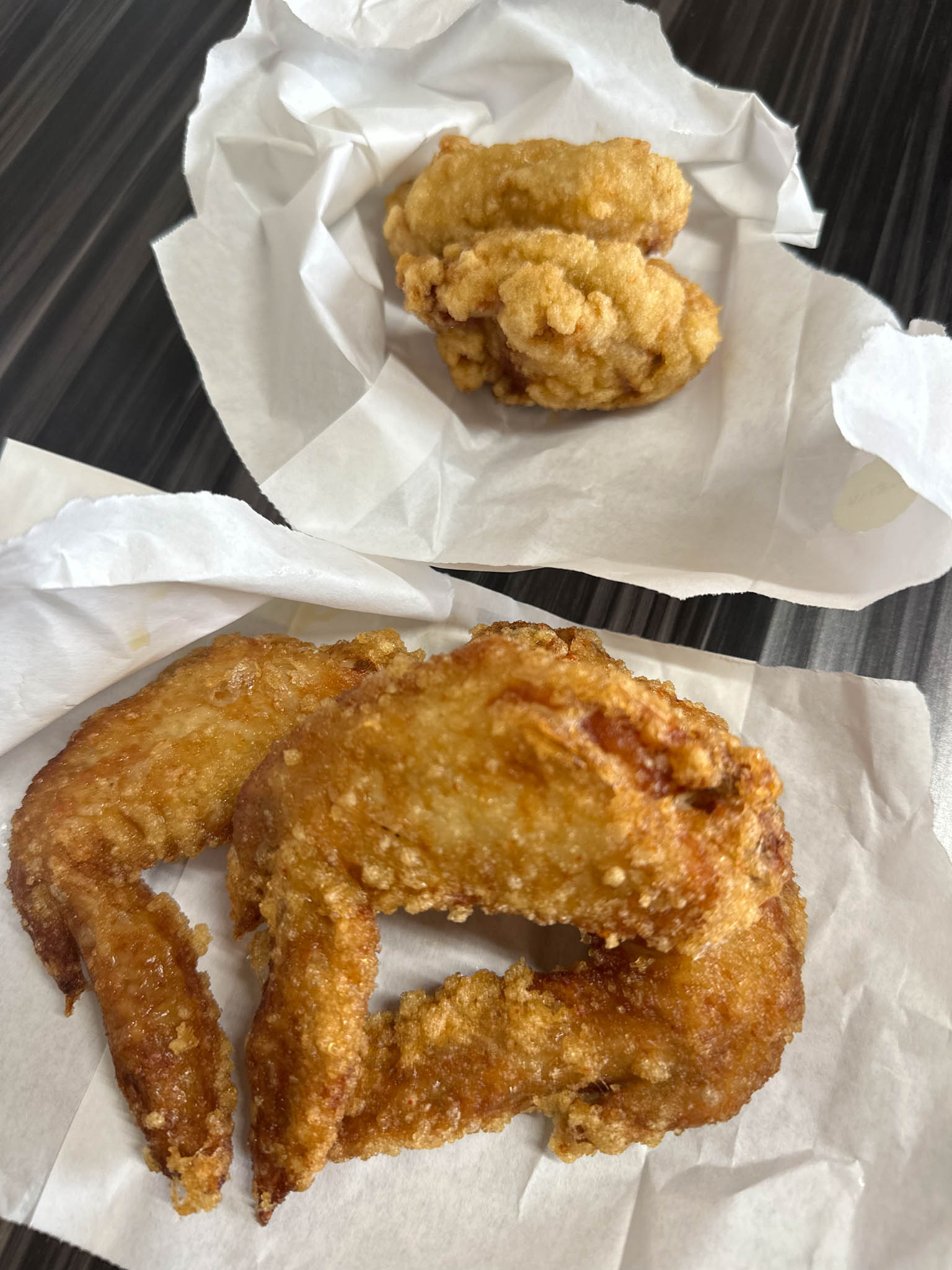

I’m happy we broke up our trip to Beppu with our stop at Nakatsu for a side adventure. My verdict? While all the actual chicken was superior to any chicken I’ve tasted at home, my mom’s chicken karaage is still the best.
We arrived at our hotel in Beppu and headed straight to the onsen to begin our time of relaxation.

I was in serious relax mode and didn’t want to take my yukata off but decided to do a little wander around town pre-dinner. I was peckish and found myself outside of one of my childhood fast food favourites so I stopped in for a bite. I remember being young in Japan and taking the train by myself to visit my grandmother. I always stopped on the way to pick up a couple ebi burgers from Lotteria which we enjoyed together at her house. It’s one of the few memories I have of my grandmother and every time I bite into a Lotteria ebi burger now, I think of the smile that my grandmother would have when she took her first bite and claimed “oishii”!

One of the things I wanted to do on this trip to Japan was learn more about sake. I enjoy drinking sake but other than understanding the different polish of the rice, I’m not familiar with the different flavour profiles or regionality of Nihonshu (as they call sake in Japan).
Beppu Sake Stand. is a little tasting room in town and true to its name, you stand at the bar while sipping from their vast sake inventory. I found the staff to be knowledgable friendly and very eager to help me learn.
I wanted to be strategic, so I explained that I wanted to explore the range of flavours from sweet (amakuchi) to dry (karakuchi) and to learn more adjectives to describe the flavours I enjoy. I decided to stay regionally and tried 3 sakes from the Oita region.



After a great sake tasting, I made my way back to the our hotel where dinner was included. We were served a comforting dangojiru (pork & dumpling) hot pot along with the customary small bites, sashimi and Beppu’s famous tori tempura.

We woke up early the next morning and after a quick visit to the onsen, we sat for breakfast at the hotel. I admit, I had this day marked on my schedule because I love the opportunity to have Japanese breakfast. People always comment that my choices are more Japanese than what most Japanese people would choose at a breakfast buffet, but then again, they get to eat it always, for me it’s a treat!.
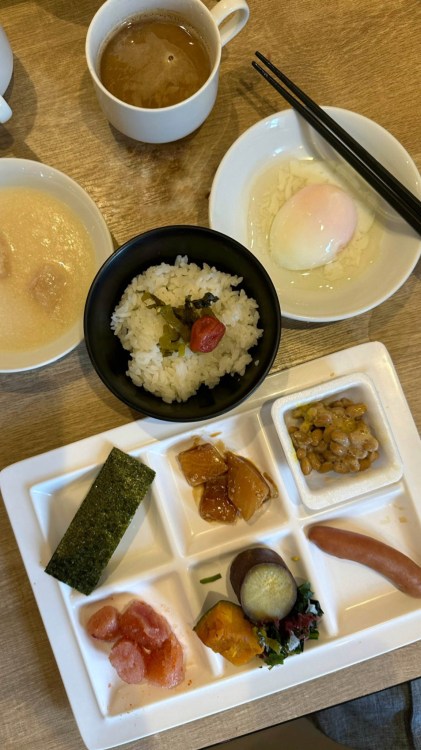
We had a morning of sightseeing planned and I wanted to get out early before the masses. Our idea was to check out a few of the unique hot springs but when my mom discovered there was a tram that would take us to the top of Mount Tsurumi, we added that to our plan as well. My mom has never said no to a tram/gondola ride!

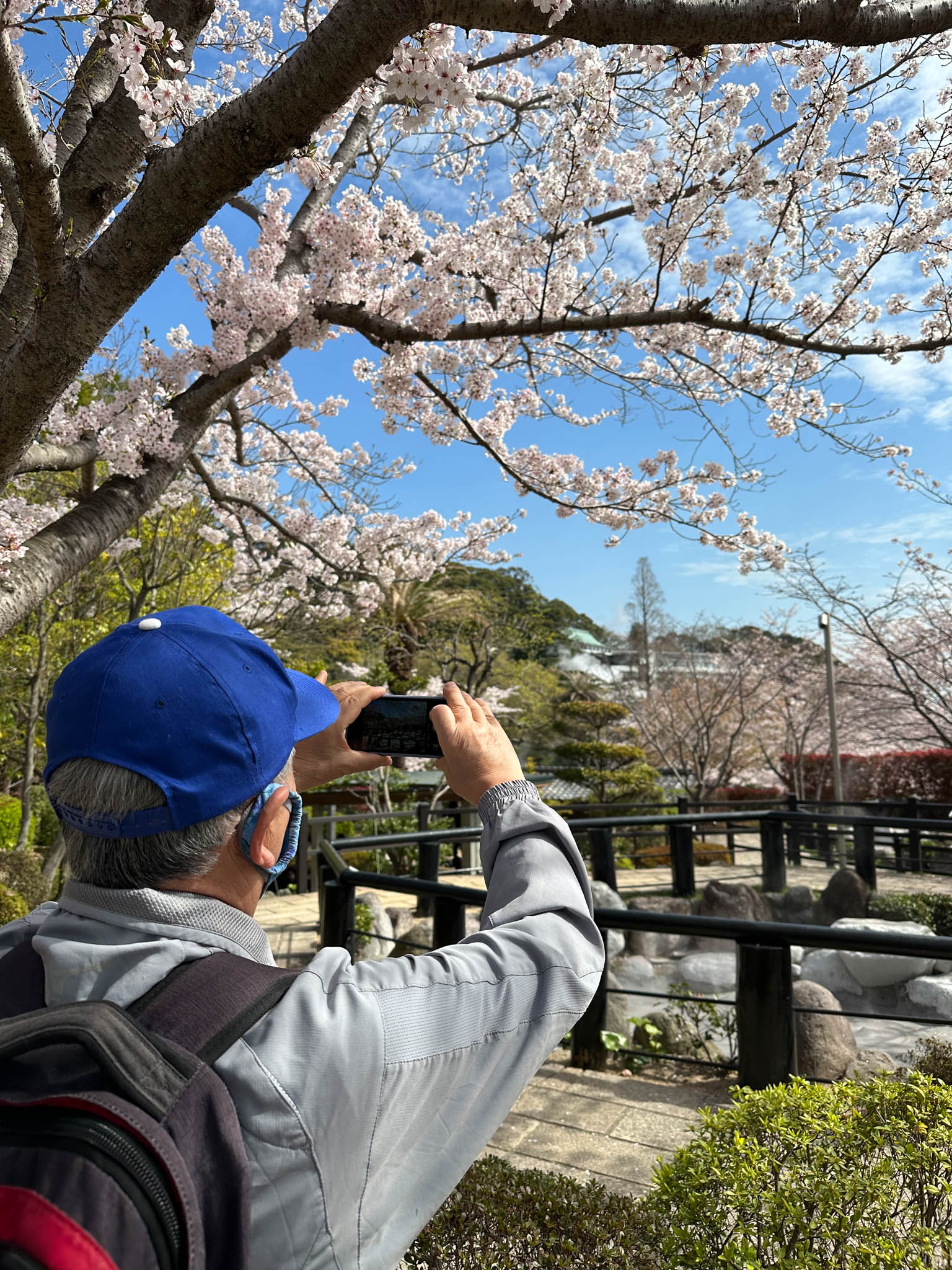




There were a couple more places in Beppu for a pre-dinner drink that I had on my list, but I enjoyed the sake education I’d received at Beppu Sake Stand the day before so I went back. On my second visit, I tasted sakes from different areas of Japan that were karakuchi = dry, which I discovered was my preference.
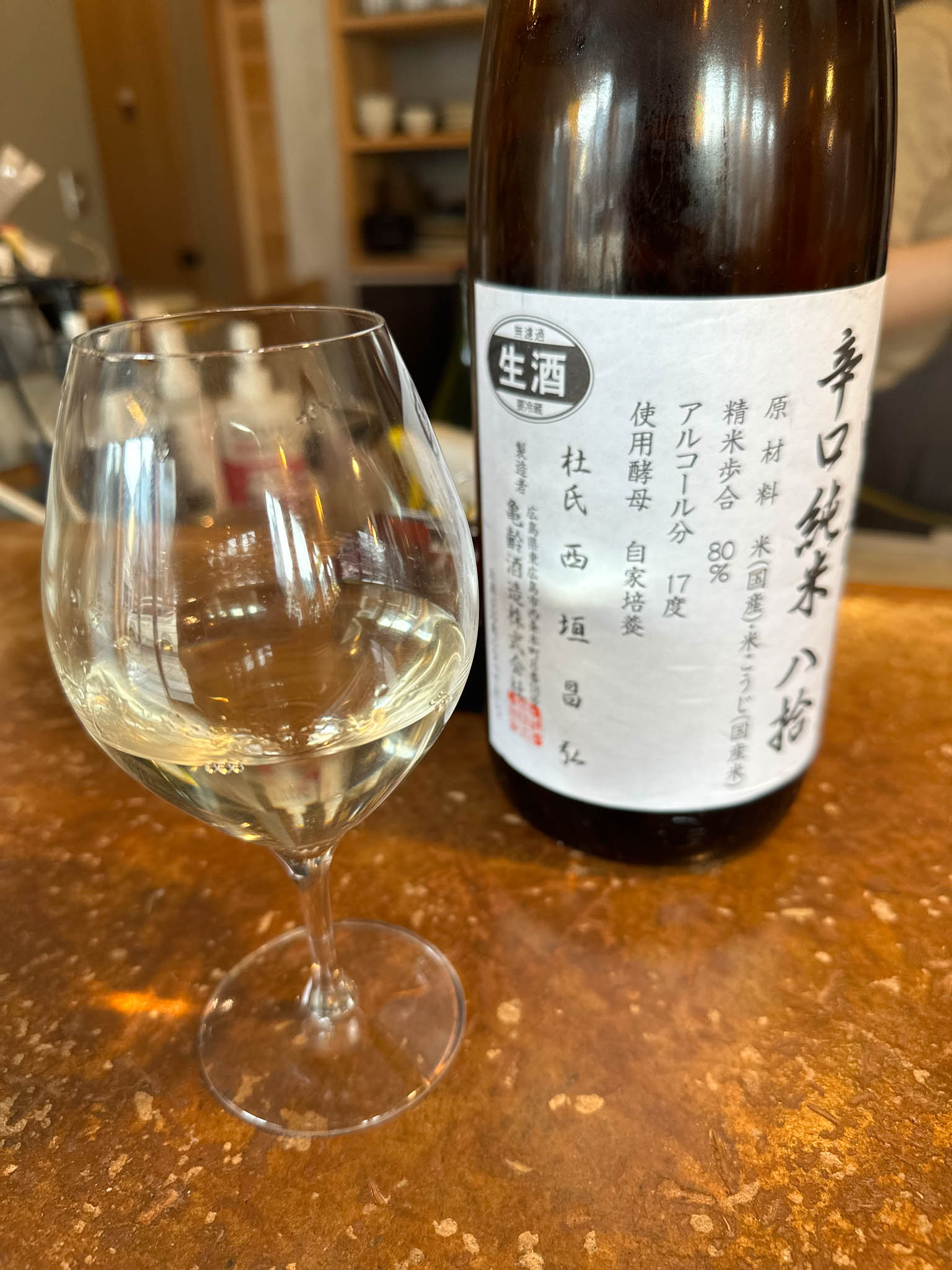


Yakiniku is one of my favourite dinners in Japan which we usually eat when we’re in Osaka/Kyoto. With our rushed itinerary this trip, I wasn’t sure I was going to fit it in. As I researched what foods to eat while we were in Beppu, I was excited to learn that Oita prefecture has its own famous beef.
While Kobe beef is probably the most famous of the Japanese beef, I’ve mostly eaten Matsusaka and Omi beef while in Osaka & Kyoto. Yakiniku is my favourite way to delight in the deliciousness of the fatty marbled wagyu meat that melts in your mouth, with sukiyaki & shabu shabu coming in a distant 2nd&3rd. I can’t say once the meat has been grilled/cooked and dipped in delicious sauces that I can discern the subtle flavour differences between them, but then again, I’m usually only eating meat like this once or twice a visit. Oita’s Bungo-gyu is another type of Japanese Black Cattle beef, while less famous internationally, it has been garnering national attention. I was excited to indulge in a meal of succulent meats.
We ended up at Yakiniku Gansou after a mix-up of dates for my reservation at Yakiniku En En in Beppu. I don’t know what En En is like, but Gansou was impressive., not just in size but in efficiency through their direct tablet ordering (which has become common in Japan. We ordered rosu (roast) and kalbi (short rib) ate a meal of meat. I don’t eat a lot of meat at home, so yakiniku is a guilty pleasure when I’m away.
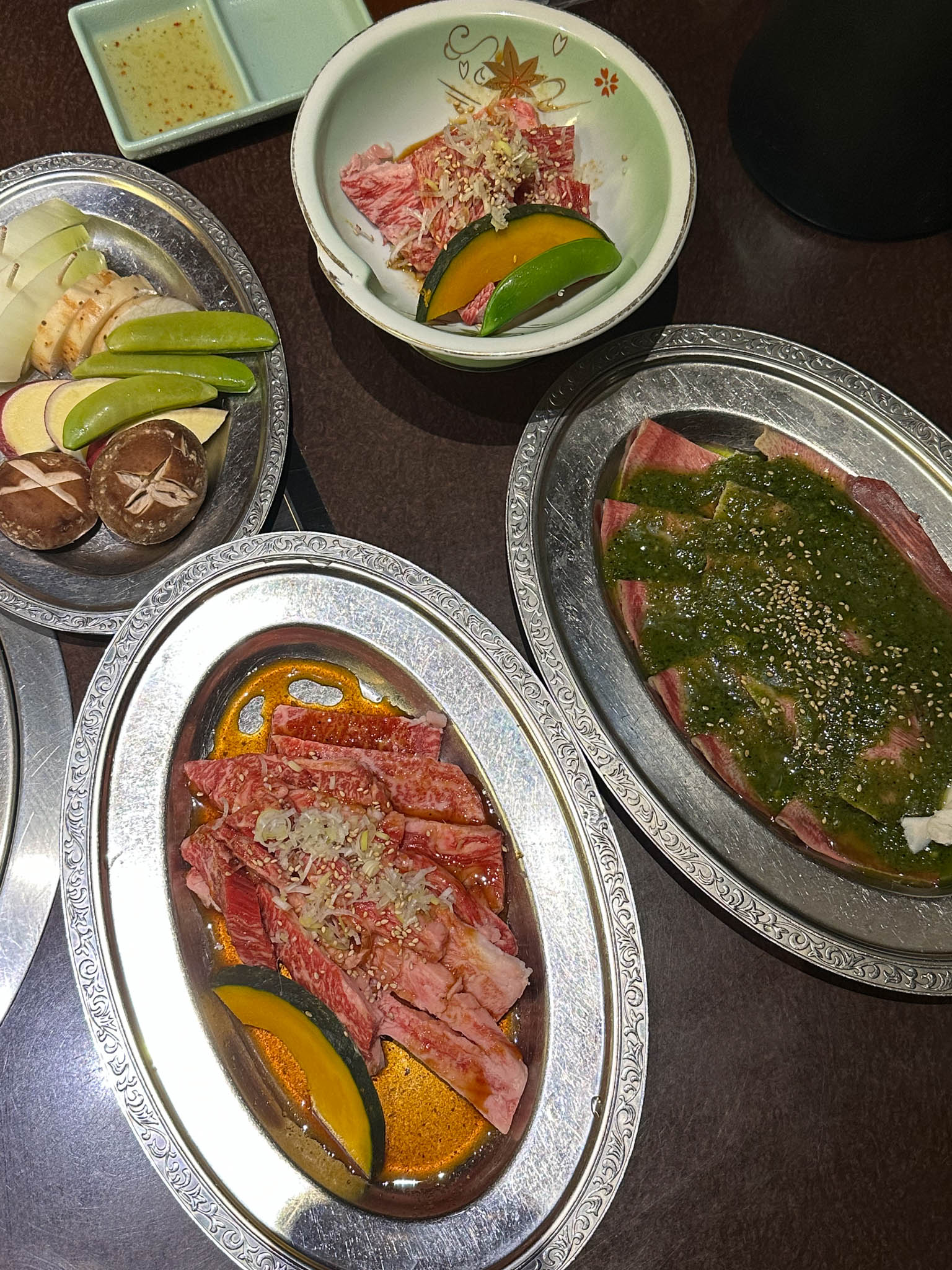



36 hours in Beppu was a great amount of time exploring the area. I’ll definitely be back with more time set aside to just slow down from the hustle of the rest of Japan while delighting in the treasures I know I missed.

